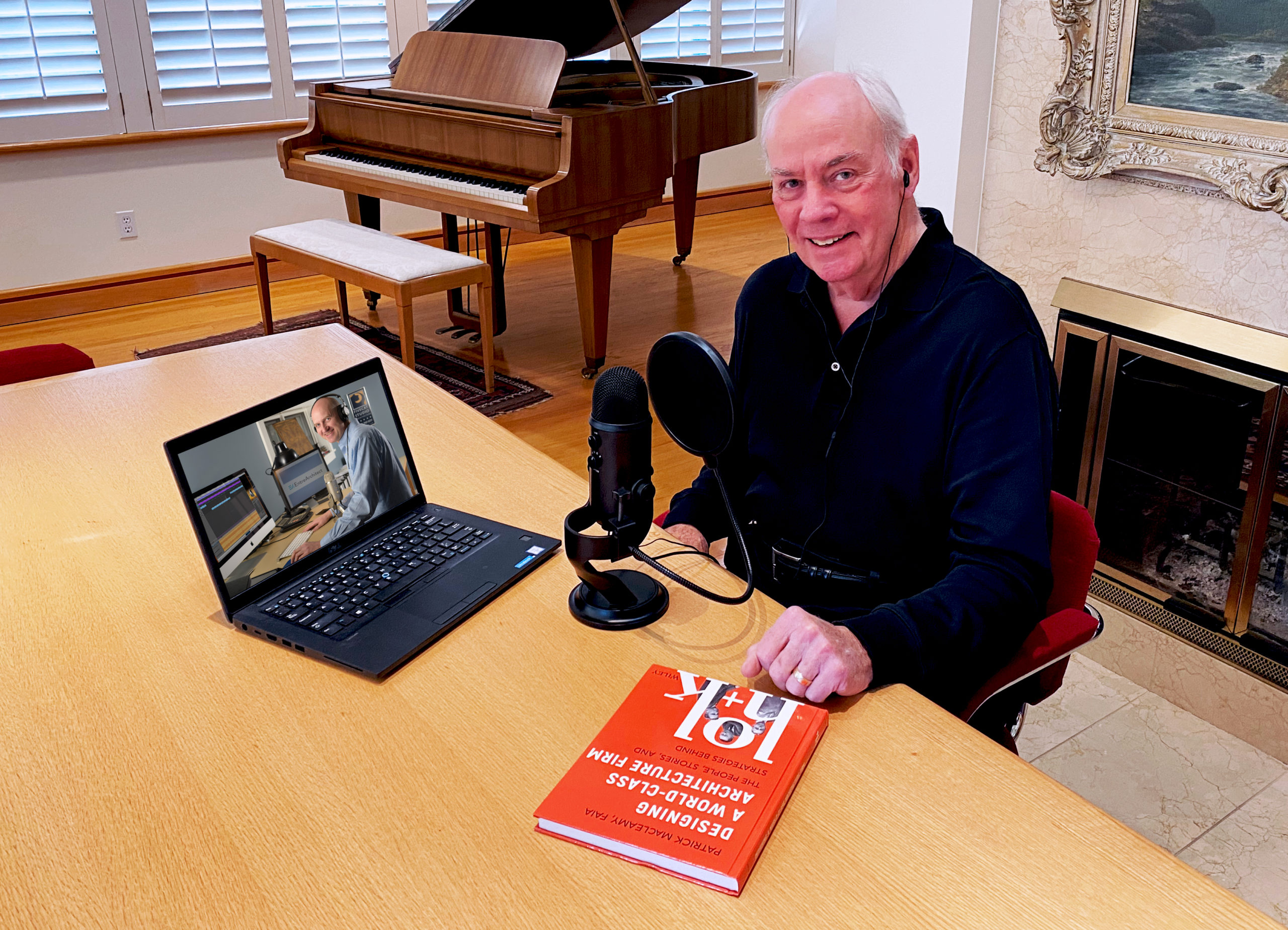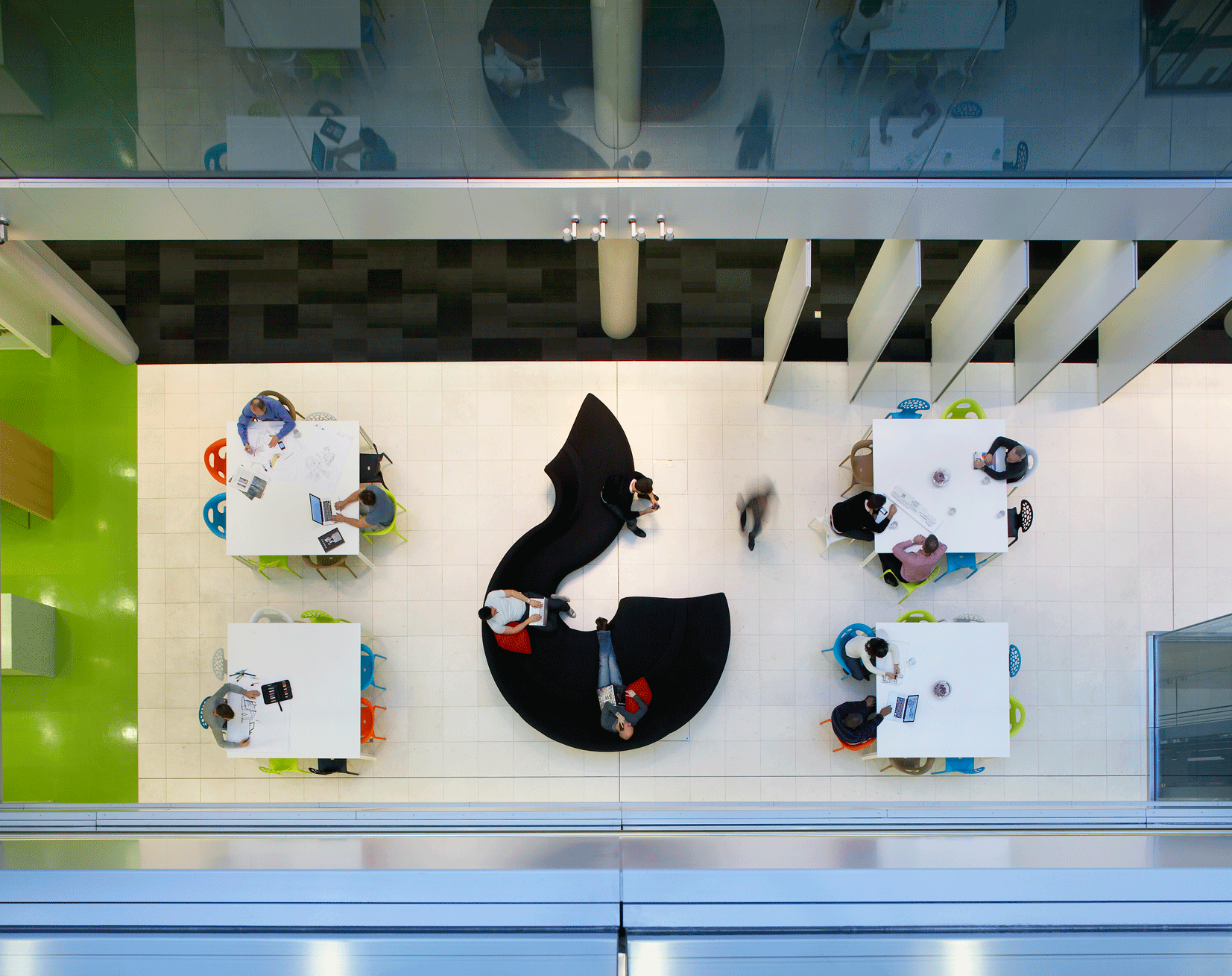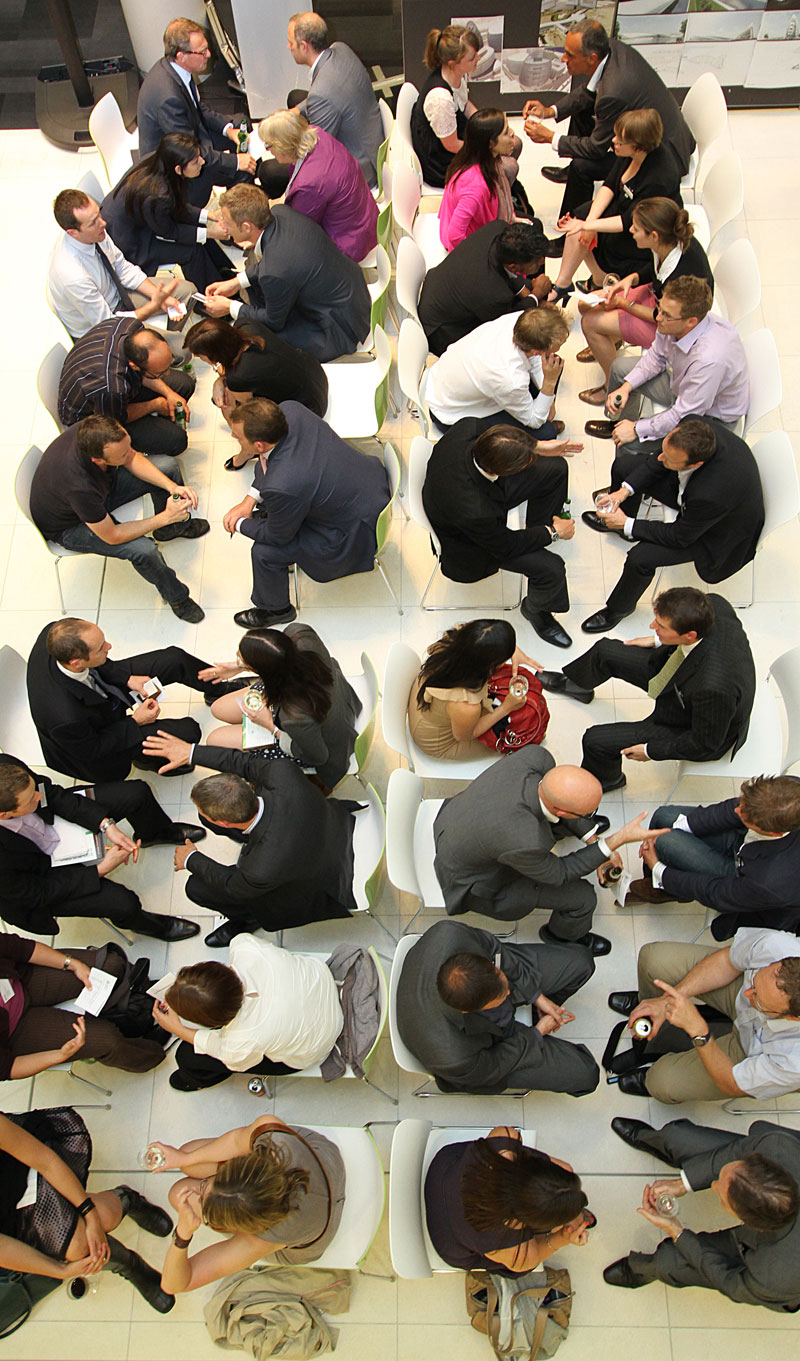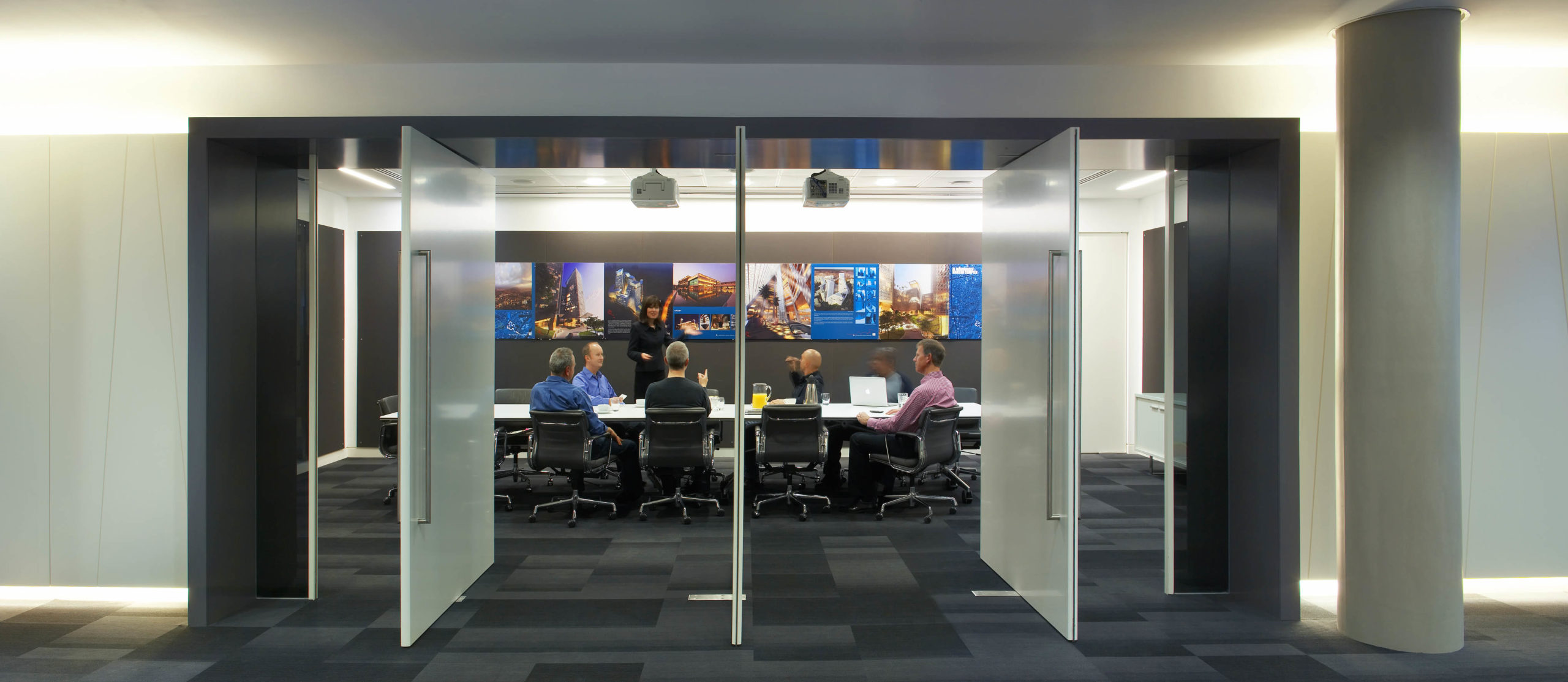Architects: Showcase your next project through Architizer and sign up for our inspirational newsletter.
Patrick MacLeamy is the ultimate HOK insider: he spent 50 years at the company, which grew into one of the most prominent architecture and engineering firms in the world. When he joined HOK St. Louis in 1967, his role was as Junior Designer. Shortly after, he helped establish the firm’s San Francisco outpost in 1970, later becoming managing principal of that office. Over the years, MacLeamy witnessed the firm’s growth from a single midwestern office to 27 locations worldwide, offering architecture, interiors, engineering, planning and more.
He joined HOK’s executive committee in 1995 and was named COO five years later; in 2003, HOK shareholders elected MacLeamy Chief Executive Officer. He led the firm for 13 years, until 2016 when MacLeamy chose a new CEO for HOK — remaining as Chairman for one more year. Since retiring, MacLeamy has kept busy writing and publishing his latest book, Designing a World-Class Architecture Firm: The People, Stories and Strategies Behind HOK, and founding and serving as the Chairman of buildingSMART International. He is also now cohost of the latest podcast by Gābl Media, titled Build Smart, where he draws on his illustrious and diverse experiences and trajectory to discuss tips for service-oriented architectural businesses.
In the spirit of these new endeavors, Architizer asks MacLeamy to share insight into some of the interwoven themes of architecture, business, mentorship and technological transformation that feature prominently in his oral and written output.
 Hannah Feniak: Build Smart is a 14-episode series co-hosted with Mark R. LePage, AIA, NCARB, inspired by your book, Designing a World-Class Architecture Firm: The People, Stories, and Strategies Behind HOK (Wiley, 2020). How does the podcast format differ from your book? Has it allowed you to do anything that you felt restrained by with the book format?
Hannah Feniak: Build Smart is a 14-episode series co-hosted with Mark R. LePage, AIA, NCARB, inspired by your book, Designing a World-Class Architecture Firm: The People, Stories, and Strategies Behind HOK (Wiley, 2020). How does the podcast format differ from your book? Has it allowed you to do anything that you felt restrained by with the book format?
Patrick MacLeamy: Build Smart offers the opportunity to convey anecdotes as a conversation as opposed to a “books on tape” approach. The podcast also lets us interview key people involved with HOK’s growth from a single-office firm in St. Louis through its expansions and diversification into one of the world’s leading architecture and engineering firms. We were able to prioritize podcast topics based on feedback from the book. Two themes that resonated with readers are the difference between leading and managing and the often uncomfortable “run toward trouble” approach to problem-solving.
When did you and Mark R. LePage first meet, or how did this podcast collaboration come about? How did his participation — perhaps related to his background with EntreArchitect and its focus on Small Firms, etc. — change your thinking about specific topics or reflections in your book?
EntreArchitect was one of the first podcasts to interview me after the book was released. I enjoyed the episode with Mark and his insights on the challenges currently facing small and medium-sized firms. Mark reached out a few months later, saying that our hour-long interview only scratched the surface of the how-to tips in the book and asked if I would consider collaborating with him on a new podcast. It was an easy decision: Gābl Media has several well-respected podcasts serving the industry and in-place infrastructure. The company also prioritizes production quality, making it easy on the listener.


Founded in the midwest, HOK is now an international firm with offices around the world. In 2009, HOK London moved into their world-class sustainably designed offices in the Qube (a BREEAM rated building), Fitzrovia.
You began working as a junior designer at HOK in 1967, where you spent 50 years developing in management and leadership positions, ultimately becoming the company’s CEO. Now, your book and podcast aim to share the knowledge and insight that you gained over your professional journey. Where did you turn for mentorship in your early career? Do you have advice for young architects who are just starting their journeys?
As I relay in the first episode of Build Smart, my first exposure to an architect was at a high-school career fair in a nearby town. I was mesmerized. About a week after the presentation, I reached out to the architect and asked if I could visit his office and ask a few questions about the profession. He turned me down flat, saying that he didn’t have time for me. That hurt. I decided that I would always make time to listen and share. The book and the podcast are outgrowths of that desire.
My first mentor was my grandfather, who was a carpenter. He taught me about organizing room placement and amenities in a house. My professional mentors were senior colleagues at HOK. The firm’s Midwestern family culture was less hierarchical and more collaborative than other firms’ (I actually turned down my first job offer from a prestigious Chicago firm because the office atmosphere felt sterile and low-energy — even though I desperately needed a job). Gyo Obata, who hired me at HOK, used glass walls for his office to lessen the separation between management and staff.
An underlying theme in Build Smart is advice for young architects, using HOK anecdotes as examples. School teaches design but little about the business of practicing architecture. I encourage young architects to familiarize themselves with how firms are designed. For example, marketing efforts that land a constant flow of new projects are necessary to pay designers’ salaries. Young architects often find these parts of the business boring, but familiarity with them provides insights into how the firm’s operations influence its design decisions.
 How do you think that architectural practices and architecture schools can build better bridges between formal architectural education and the types of learning that take place in the profession?
How do you think that architectural practices and architecture schools can build better bridges between formal architectural education and the types of learning that take place in the profession?
I believe schools of architecture should partner with practicing architects. Practicing architects should be invited to teach professional practice, and students should visit and serve as paid interns at architectural practices. Practicing architects should also be regular speakers and panelists at schools of architecture, and in every way possible, help students understand the challenges and opportunities of architectural practice. Finally, schools of architecture should partner with schools of business administration to jointly study the practice of architecture as a subset of the service industry. If they engaged with practicing architects as part of the study, many learning and improvement opportunities could be explored.
Your book was published in 2020, and the podcast explores themes such as recession-proofing buildings, confronting a crisis, and diversification. While both are based on your experiences over the past 50 years, how has the COVID-19 pandemic and the related economic, social and urban fallouts affected your thinking about building an unflappable architectural practice?
History tends to repeat itself. HOK co-founder George Hellmuth grew up with a father and uncle who were architects. When their firm had work, they hired draftspeople, only to lay them off between projects. After George earned his architecture degree, during the Great Depression, his dad and uncle couldn’t afford to hire him. He structured HOK to counter these cycles with novel-at-the-time features, including a full-time marketing department.
Diversity in projects and people helps firms endure crises such as COVID-19. The more typologies in a firm’s portfolio, the more projects it stands to be awarded. And HOK learned the value of a diverse staff while expanding internationally. Different backgrounds result in a wider range of insights and solutions to problems. It also helps the firm improve communications with existing and future clients.


Thirty years after the original design for King Khalid International Airport (KKIA), lead by Patrick MacLeamy, was completed in 1983, HOK returned to Riyadh, Saudi Arabia to expand the project.
You’re now chairman of BuildingSMART International; what role does the profession’s digital transformation play in your discussions about the development of an architectural business?
In my mind, this is the most exciting aspect of the industry. Open-BIM has enormous potential for elevating building quality and operational efficiency on a global scale. As architects, builders, city planners and product manufacturers get on the same page early in a project, buildings will become exponentially greener. We can severely minimize construction waste, include the latest and most efficient products such as photovoltaic and mechanical systems in a building, and optimize operation to minimize energy consumption. BuildingSMART currently has chapters in 26 countries and is growing. We’re devoted to showing how great building design can curtail the sizable global carbon footprint currently produced by construction and building operation.
Finally, one last question: You also maintain that good business and good professional teams beget good design. Briefly, how would you characterize the relationship between the art and business of architecture?
During the Renaissance, patrons like the de’ Medici family of Florence became patrons of the arts, supporting great artists like Michelangelo and leaving them free to concentrate on their art. At this time, great firms like HOK serve as patrons of their staff, supporting their people as their people support their clients and projects. People are the absolute key to a successful architecture practice, or any creative service business—or any business employing people. The best leaders understand this and become servant leaders, dedicated to helping their people succeed.
BUILD SMART is a narrative podcast that features Patrick MacLeamy, FAIA, architect, and former CEO of global firm HOK. With host Mark R. LePage, AIA, NCARB, MacLeamy shares stories and lessons from his 50-year career, rising from an HOK junior designer to the company CEO, a tenure that parallels HOK’s growth from 150 employees in St. Louis to a staff of more than 1,900 in 27 offices on three continents. MacLeamy highlights innovative solutions and tough decisions that sustained HOK through multiple economic swings, culminating in it becoming one of the world’s Top 10 architecture and engineering firms. HOK was structured for long-term success — BUILD SMART will share these lessons to help architects and creative-services firms build for long-term success as they design a world-class firm.
 Topics will include:
Topics will include:
- Creating a Recession-Proof Firm
- Leading vs. Managing, Structuring the Firm Around Specialized Leaders
- Capitalization: Outside Investors, Working With Banks
- Diversification: Division Launches, Mergers, Acquisitions
- Reclaiming Company Culture, Positive Peer Pressure
- Confronting Crisis
New episodes will appear every Monday through July 5, 2021. For more information, visit https://gablmedia.com/show/buildsmart/
Interested in Patrick MacLeamy’s book, Designing a World-Class Architecture Firm: The People, Stories and Strategies Behind HOK? Save 35% on print and ebook when using the code ARC33 at the check out!









